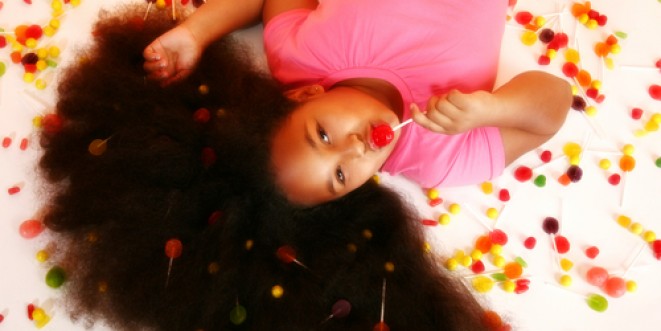When Artificial Food Colour Hurts
By Cordialis Msora-KasagoPublished: September 3, 2014

Raise your hand if you are a mother who has ever given her child a brightly coloured treat, only to observe him/her transform into a little menace, literally bouncing off the wall, talking excessively and running around as if they had a battery driving them on!
As you helplessly watched them misbehave, you vowed never to give them another treat. But alas, within a few days, you forgot your vow and gave them yet another bit of the very same brightly coloured treat.
When it comes to synthetic food colours and their effect on hyperactivity in children, the jury is still out. Some scientists argue that the artificial dyes often used to create the bright colours in commercial foods have been shown to cause cancer in rats and animals while contributing to hypersensitivity in children.
A landmark British study concluded that although the signs of hyperactivity after eating a food product with artificial colouring were mild, they were significant enough to warrant changes in the food system. Consequently, the United Kingdom’s food governing body, the Food Standards Agency, passed a mandate forcing the removal of 6 artificial colours in foods regularly marketed to and consumed by children.
On the other end of the debate, some scientists argue that artificial food colours pose no threat to the vast majority of children and are only problematic in a very small number of children who are already diagnosed with hyperactivity. As a result, many of the food colourings available in the USA are not used in the UK food system.
If you think your child may be sensitive to some of the dyes in food, here are a few things that you can do to improve his/her health.
Eliminate The Colours: Since most artificial food dye is found in candy, cookies, chips, coloured cereal and other “junk” type foods, start by removing these foods from the diet and observe the behaviour of your child. If your child is less active, they could be sensitive.
Encourage a Well-Balanced Diet: Nourish your child by including whole grains, healthy fats, lean proteins, fresh fruits and vegetables. Take control of the ingredients in your food by cooking more at home and eating out less.
Regular Dose of Omega-3 Fatty Acids: Omega 3 Fatty Acids play a role in how the brain communicates. Studies suggest that children with hyperactivity may have low levels of omega 3 fatty acids. Offer your child at least 2 servings of foods rich in this vital nutrient by including fatty fish such as salmon, tuna, Pollack and shrimp. Plant rich sources of Omega 3 fatty acids include flaxseed, chia and hemp.
Supplement if Needed: Ask your medical provider to check levels of zinc, magnesium, iron and vitamin B6 in your child and recommend a supplement if they are low. Research suggests that the low levels of these nutrients may cause hyperactivity.
Get Moving: Just as much as physical activity clears the minds of adults, regular physical activity may help young children deal with hyperactivity.
At the end of the day, most foods that contain these dyes are often loaded with sugar, fat and empty calories- components may not be such a terrible thing to eliminate from your little one’s diet. If you must give your child such a treat, do so in moderation.
Here’s to your health.
Like what you're reading? Sign up for our free newsletter and never miss a post! Plus get a FREE digital version of our Issue No.10 with sign up.

- 5 Foods That Reduce Your Risk For Cancer - April 28, 2015
- 5 Diet Blunders That Are Increasing Your Risk For Cancer - April 28, 2015
- Defeating Diabetes: The Best Way to Beat It Is to Never Develop It - November 4, 2014
- Planning Vegetarian Meals That Meet Your Nutritional Needs - June 17, 2014
- Clean Eating: What You Need To Know - September 16, 2015
- Want To Make Better Food Choices? Read The Nutrition Label! - August 20, 2014
- Breastfeeding: The Winning Goal For Life - August 1, 2014
- Juices Or Smoothies: What’s Best for Health? - October 14, 2014
- 11 Delicious Ways to Eat More Beans, Peas and Lentils - January 19, 2016
- Moin-Moin: To Peel Or Not To Peel The Beans - July 16, 2014












